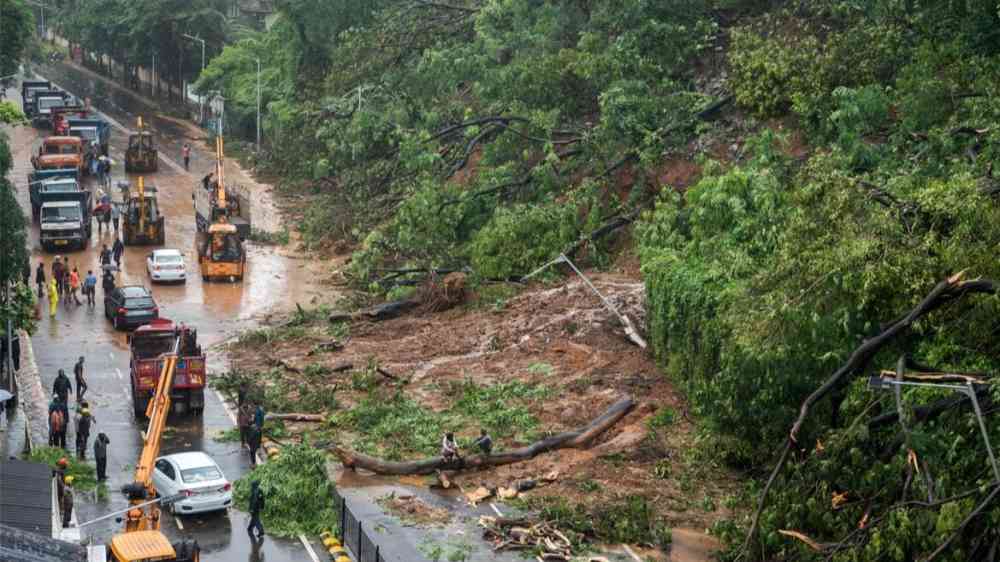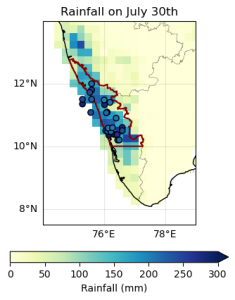Wayanad, a mountainous district in the Western Ghats, was the worst affected, however the heavy rainfall caused flooding across northern Kerala, washing away bridges, flooded homes and roads and led to power outages.
Researchers from India, Sweden, the United States, and the United Kingdom collaborated to assess to what extent human-induced climate change altered the likelihood and intensity of extreme rainfall that led to devastating landslides and floods.
The soils in Wayanad were highly saturated, which is common in the region during the rainy monsoon season, meaning the meteorological cause of the landslide was the heavy rainfall on the preceding day of the event. Wayanad has been determined to be the most susceptible district to landslides in Kerala (Sharma, Saharia & Ramana, 2024).
To characterise the event, we analyse the 1-day maximum rainfall (RX1day) during the monsoon season from June to September, focusing on a region of northern Kerala (red outline, figure1).


